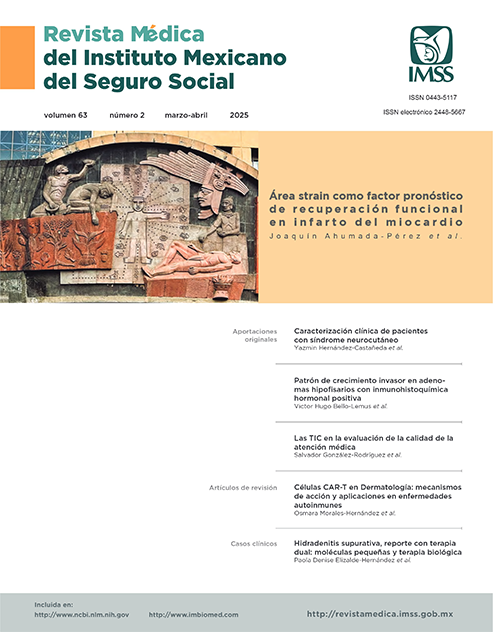Answer to “Comment on the article: “Diagnostic performance of the FINDRISC questionnaire to identify insulin resistance in adults””
Main Article Content
Keywords
Research, Diabetes Mellitus, Type 2, Sensitivity and Specificity, FINDRISC
Abstract
The FINDRISC instrument has been established as a screening tool to determine the risk of developing type 2 diabetes (T2D) at 10 years. However, the established cut-off points were based on a population with a low prevalence of the disease, unlike the Mexican population in which, based on the latest ENSANUT 2022 report, the global prevalence of T2D is 18.3%. Based on this, the need arose to establish a cut-off point to identify the presence of insulin resistance in this population using the FINDRISC instrument. And, in this way, identify the population one step before the development of T2D.
References
Varela-Vega Y, Roy-García IA, Pérez-Rodríguez M, et al. Certeza diagnóstica del instrumento FINDRISC para identificar resistencia a la insulina en adultos. Rev Med Inst Mex Seguro Soc. 2023;61(1):33-41
Villalobos A, Rojas-Martínez R, Aguilar-Salinas CA, et al. Medical care and self-care actions in people living with diabetes, according to socioeconomic level. Salud Publica Mex. 2019;61(6):876-87
Lindström J, Lindström L, Tuomilehto J. The Diabetes Risk Score A practical tool to predict type 2 diabetes risk. Diabetes Care. 2003;26(3):725-31. Disponible en: http://diabetesjournals.org/care/article-pdf/26/3/725/665299/dc0303000725.pdf
American Diabetes Association. Standards of Care in Diabetes-2024. Diabete Care. 2024;47(1). Disponible en: https://diabetesjournals.org/care
Basto-Abreu A, López-Olmedo N, Rojas-Martínez R, et al. Prevalence of prediabetes and diabetes in Mexico: Ensanut 2022. Salud Publica Mex. 2023;65(1): 163-8
INEGI. ESTADÍSTICA DE DEFUNCIONES REGISTRADAS (EDR). De enero a junio de 2023 (preliminar). 2023
Lopez-Jaramillo P, Gomez-Arbelaez D, Martinez- Bello D, et al. Association of the triglyceride glucose index as a measure of insulin resistance with mortality and cardiovascular disease in populations from five continents (PURE study): a prospective cohort study. Lancet Healthy Longev. 2023;4(1):e23-33
Papakonstantinou E, Oikonomou C, Nychas G, et al. Effects of Diet, Lifestyle, Chrononutrition and Alternative Dietary Interventions on Postprandial Glycemia and Insulin Resistance. Nutrients. 2022;14(4):1-78
Mirabelli M, Chiefari E, Arcidiacono B, et al. Mediterranean diet nutrients to turn the tide against insulin resistance and related diseases. Nutrients. 2020;12(4):1-37
García-Alcalá H, Genestier-Tamborero CN, Hirales-Tamez O et al. Frequency of diabetes, impaired fasting glucose, and glucose intolerance in high-risk groups identified by a FINDRISC survey in Puebla city, Mexico. Diabetes, Metabolic Syndrome and Obesity. 2012;5:403-6


